Beautiful composition in the taste of Ancient Rome depicting women bathing in the baths of a Roman palace. This work highlights the talents of the brilliant painter Emilio Vasarri, this artist was a great colorist with a meticulous attention to detail and he demonstrates once again here his keen interest in Antiquity. This painting is very characteristic of his finest achievements, in fact Vasarri liked to symbolize the ancient festival of Fontinales, a celebration in honor of Fontus, the Roman god of wells and springs. We must admire his accuracy in the representation of ancient architecture and costumes, and his precision in the rendering of the textures of the marble. Many of the objects and motifs that Vasarri includes in his works attest to his knowledge of the ancient past, as Lawrence Alma-Tadema his familiarity with museum collections, especially those related to examples preserved in the National Archaeological Museum of Naples. Thus details of the ancient city of Pompeii are distributed in this charming composition, for example the Athenian incense burner located in the center right of the composition, known as the "Tripod of the Temple of Isis" this Athenian is designed after the Roman antiquity found in Pompeii and preserved in the Museo Archeologico Nazionale in Naples, it is part of the general architecture also resulting from the artist's knowledge of this ancient Italian city that has disappeared. Emilio VASARRI (1862-1928) Student at the Academy of Fine Arts in Florence. Like Jean-Léon Gérôme (1824-1904) and Ernest Meissonier (1815-1891), he became a specialist painter in the representation of Greco-Roman episodes from Antiquity. He exhibited at the Salon from 1897. He won a medal at the 1900 Universal Exhibition. At the 1905 Salon, the proposal Les Fontinales (Fountain Festival) was presented. In December 1920, an exhibition of these paintings was held at the gallery at 15 rue du Faubourg-Saint-Honoré.



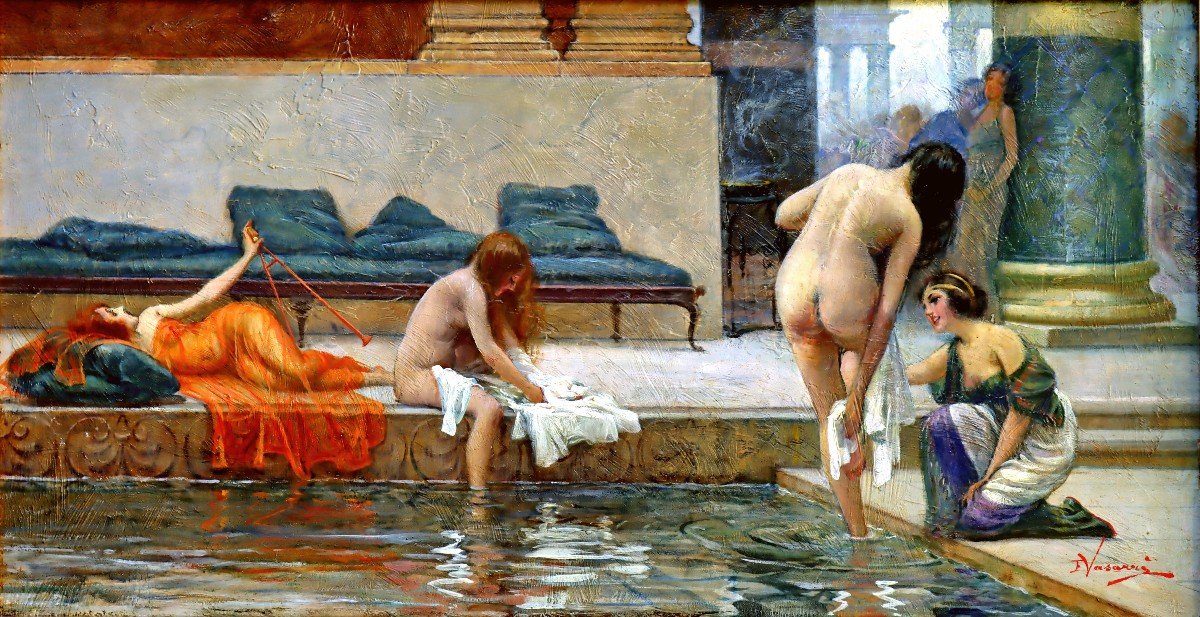
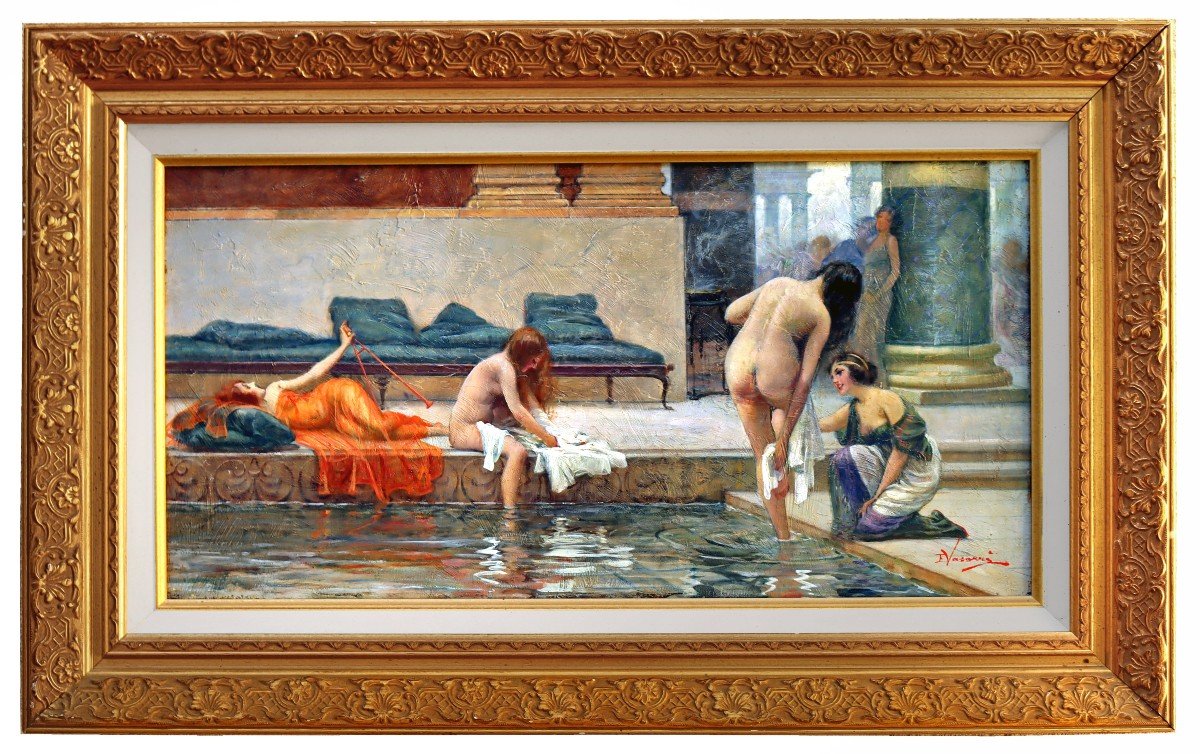
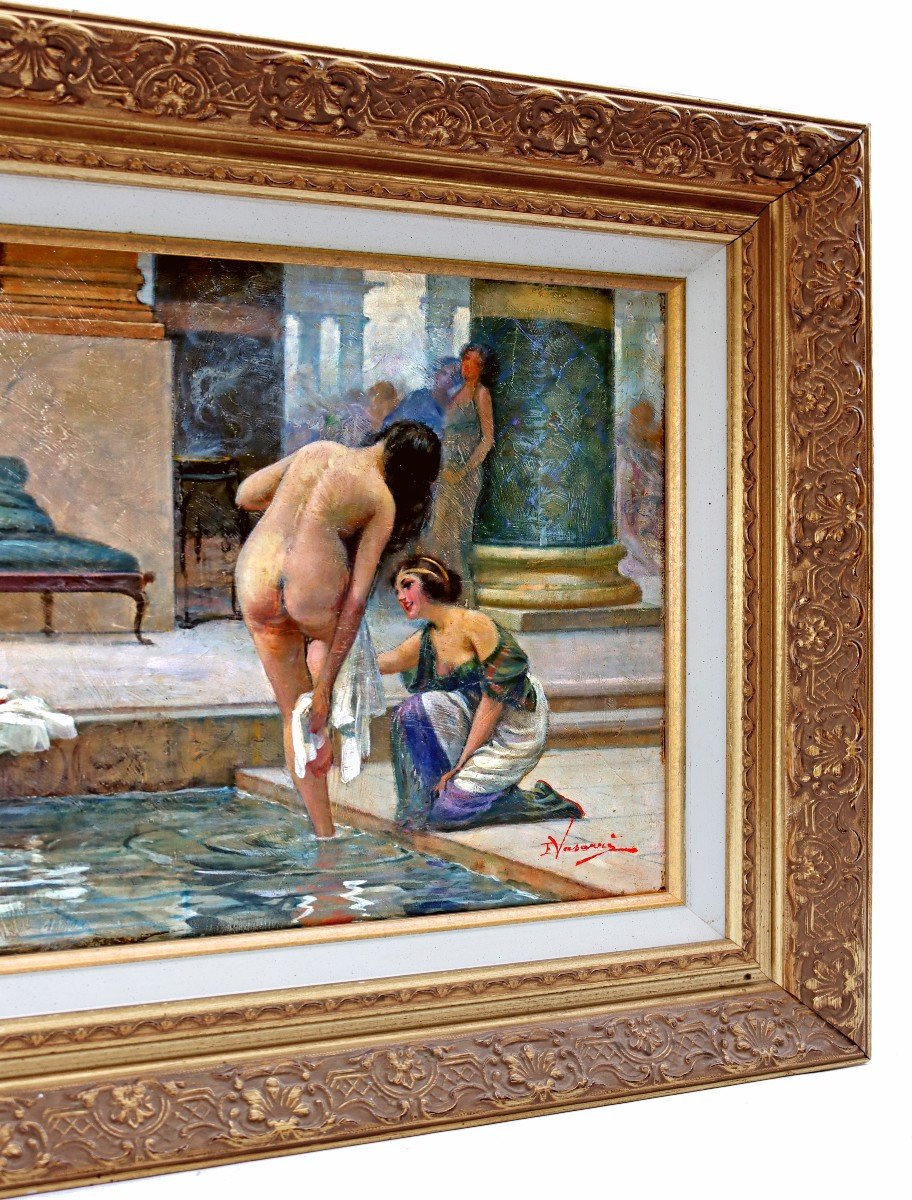
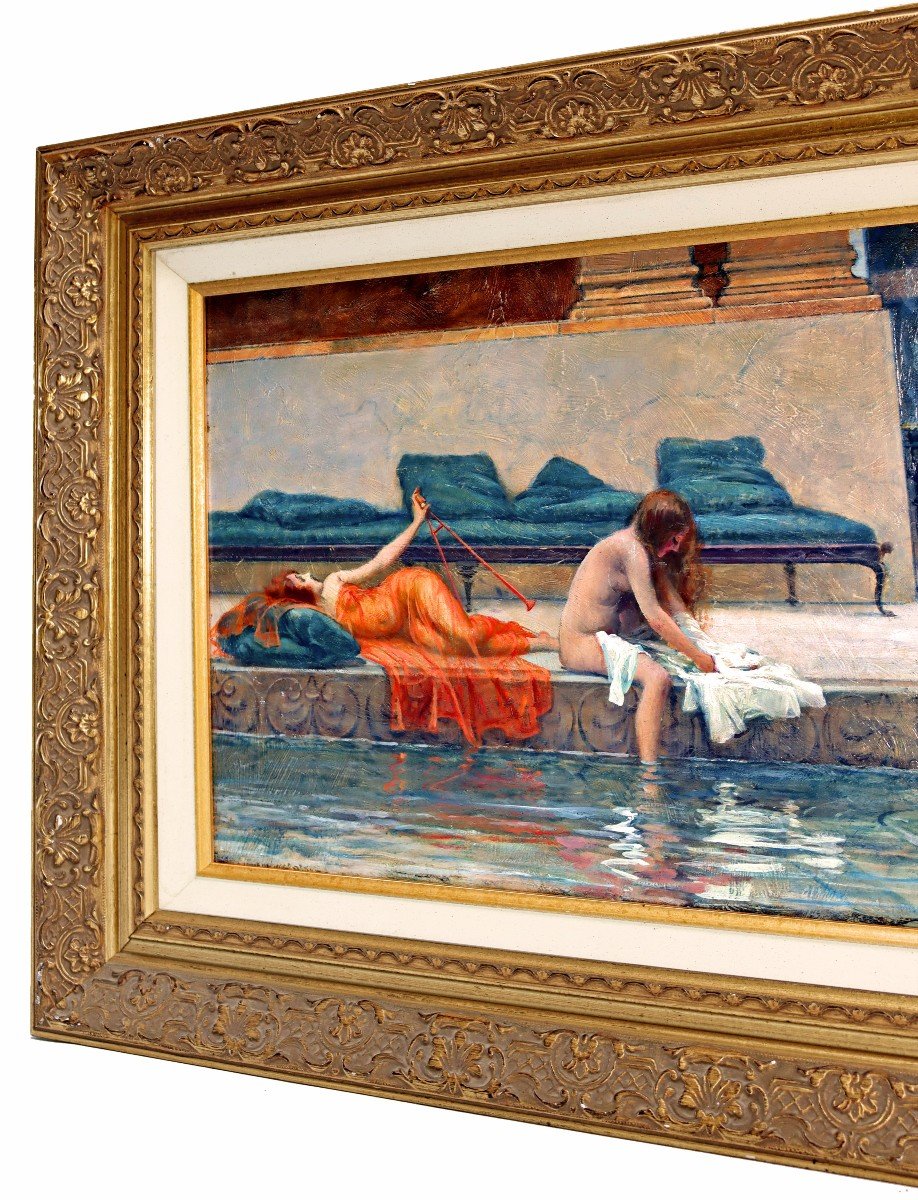
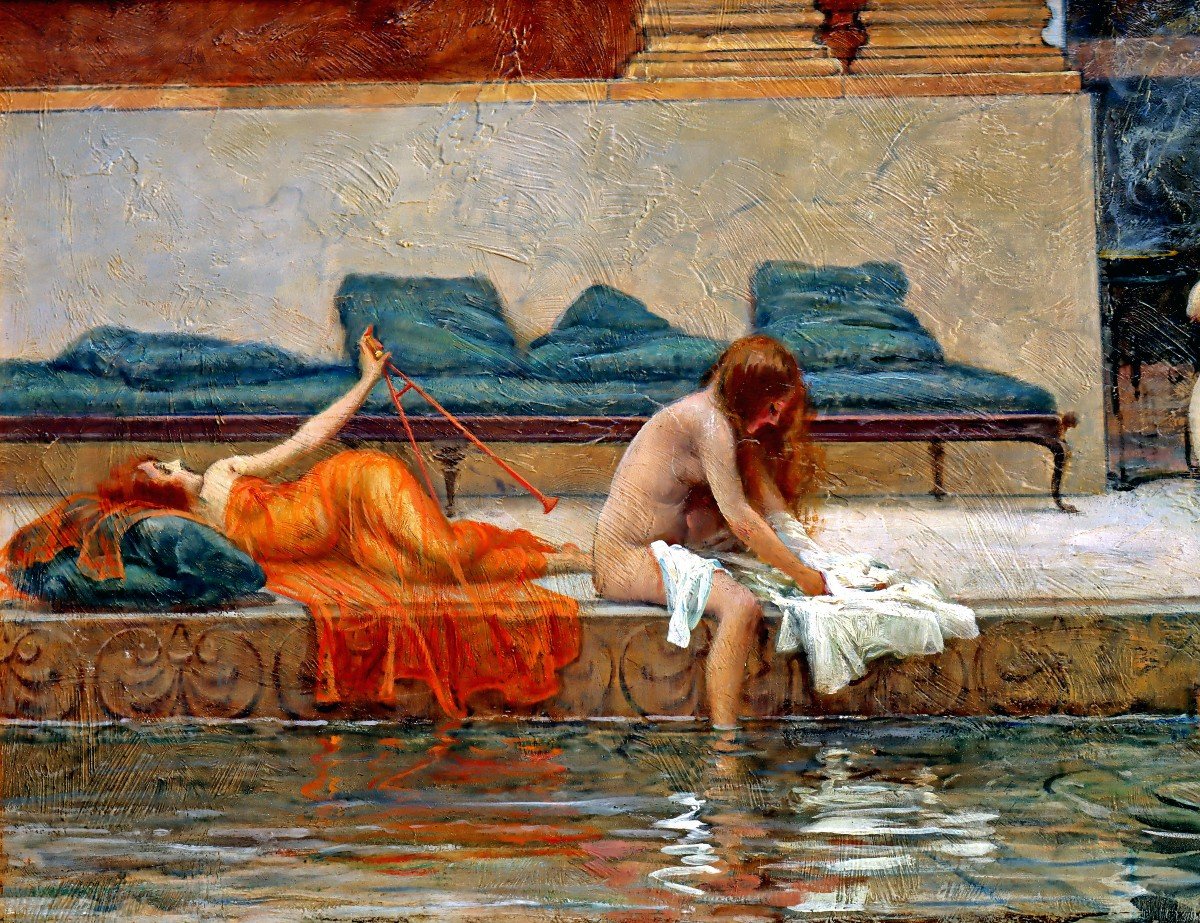
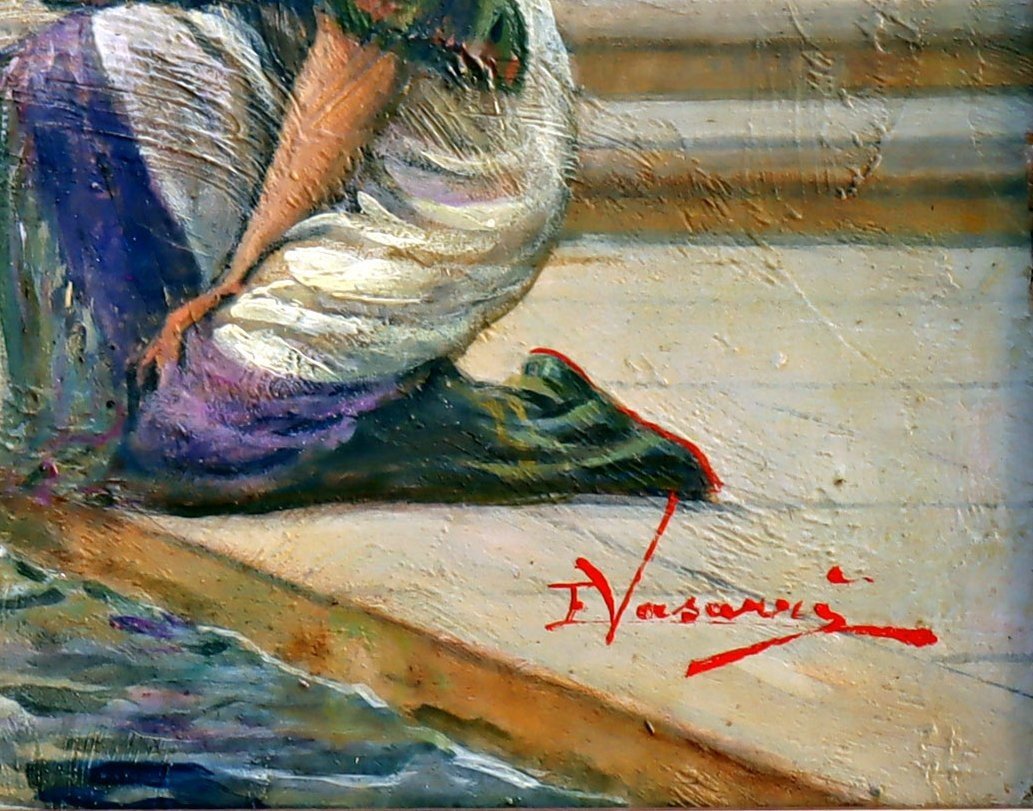
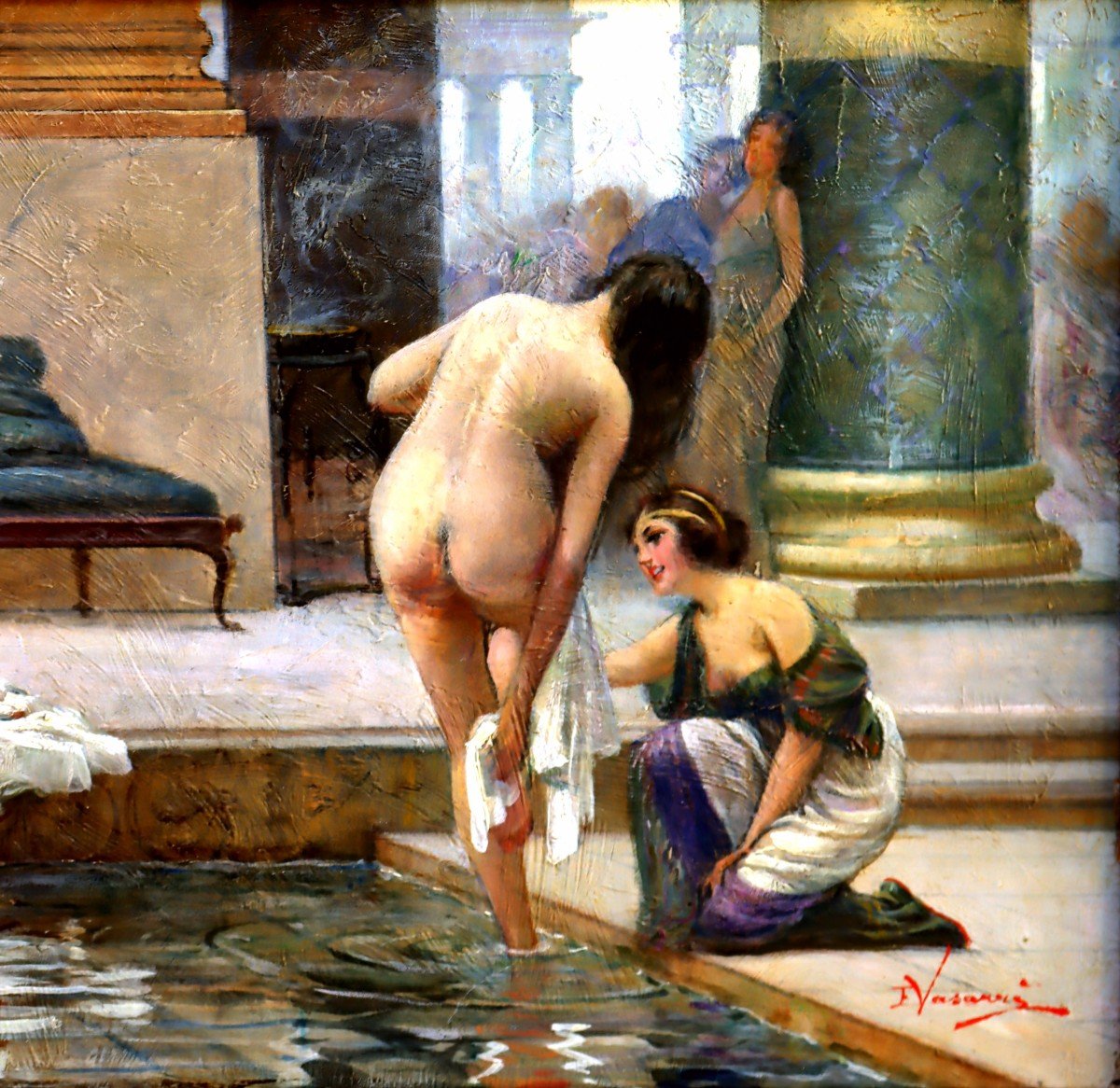
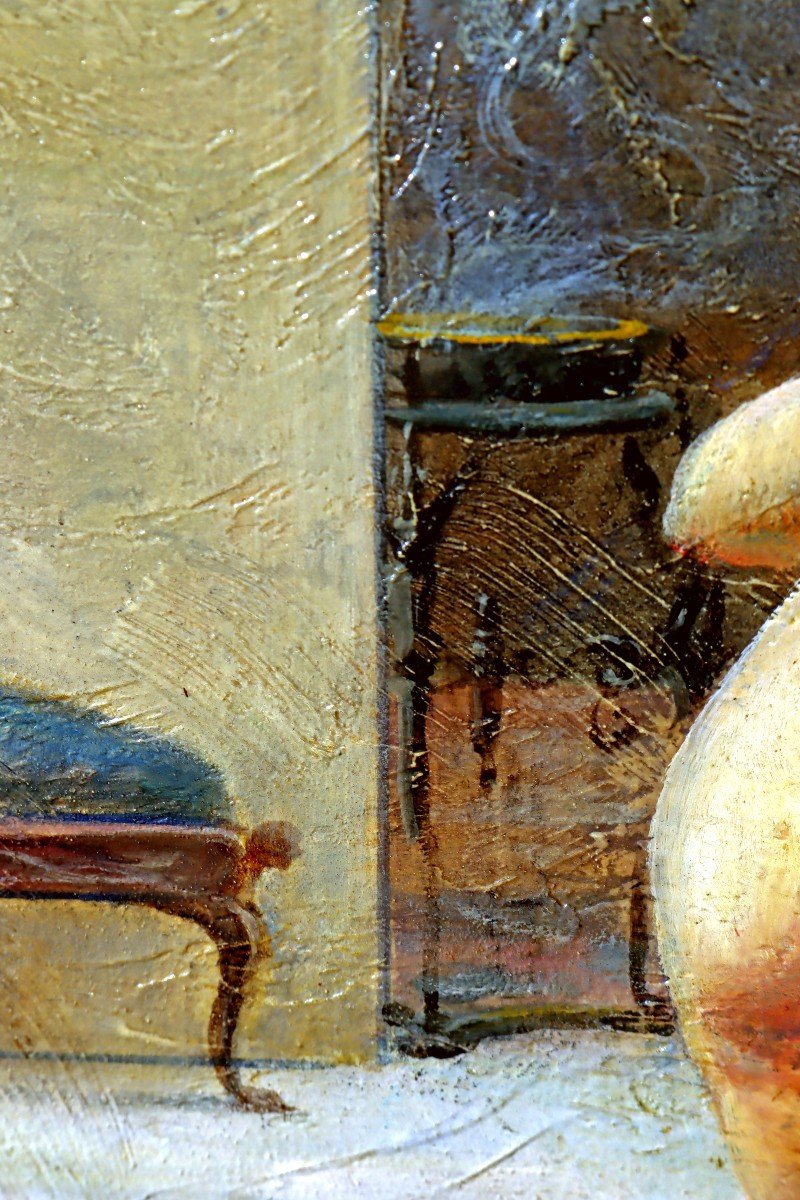
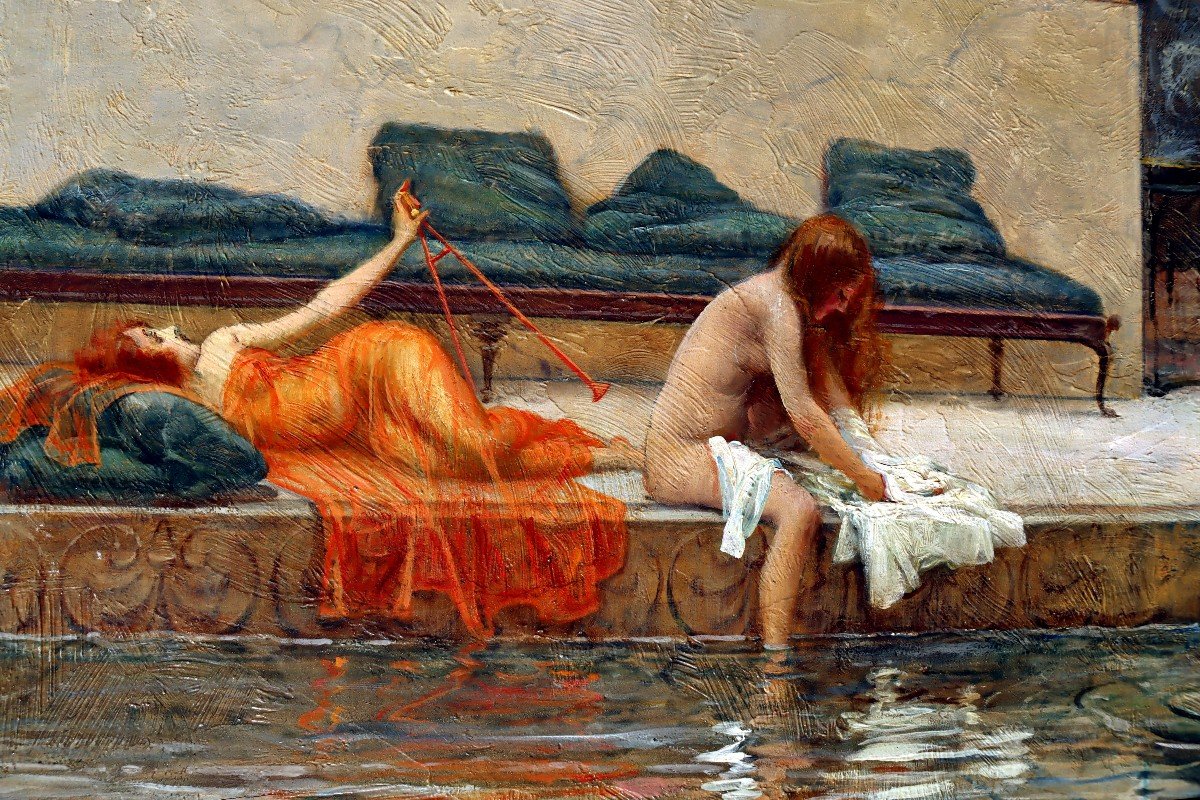
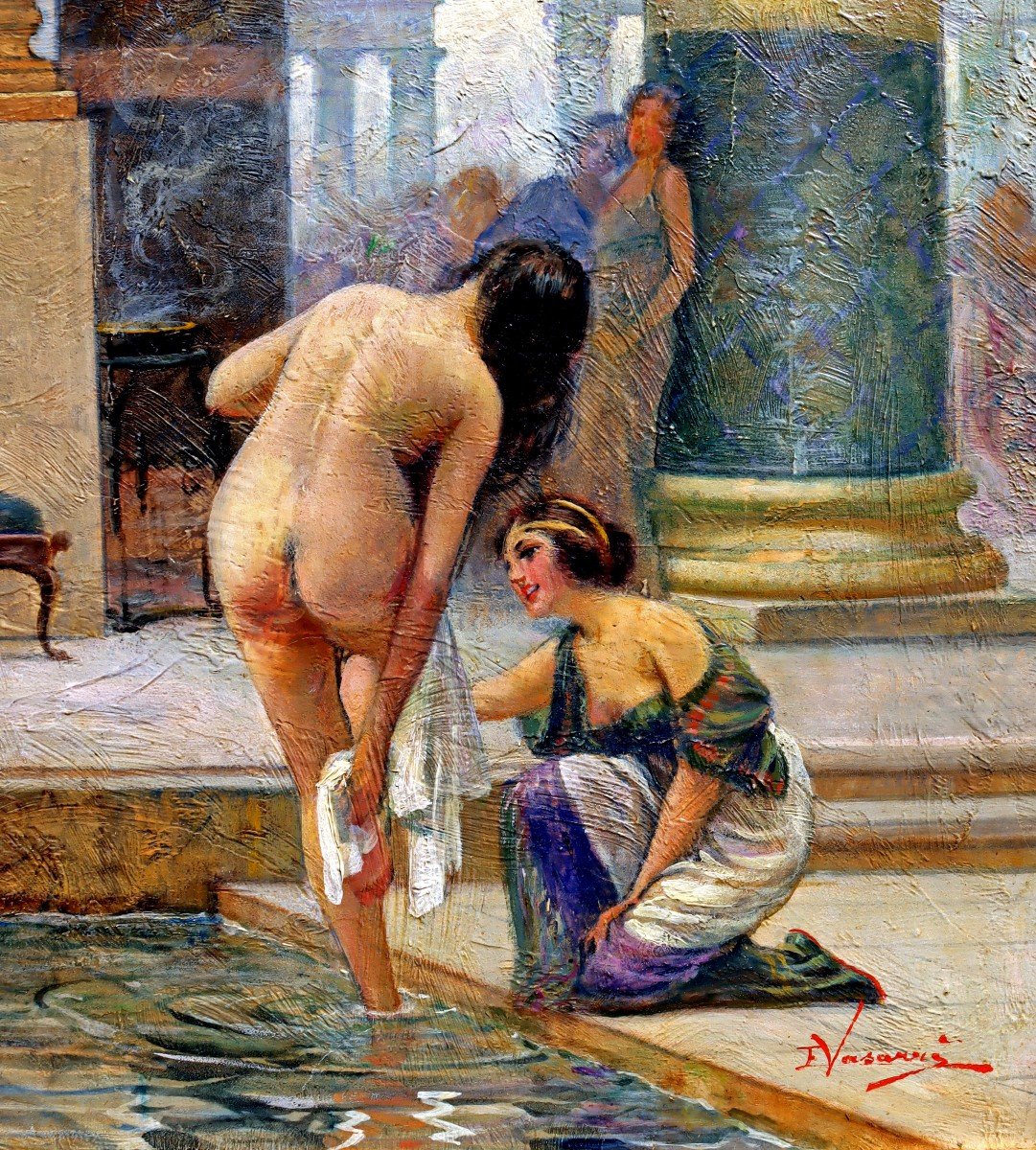
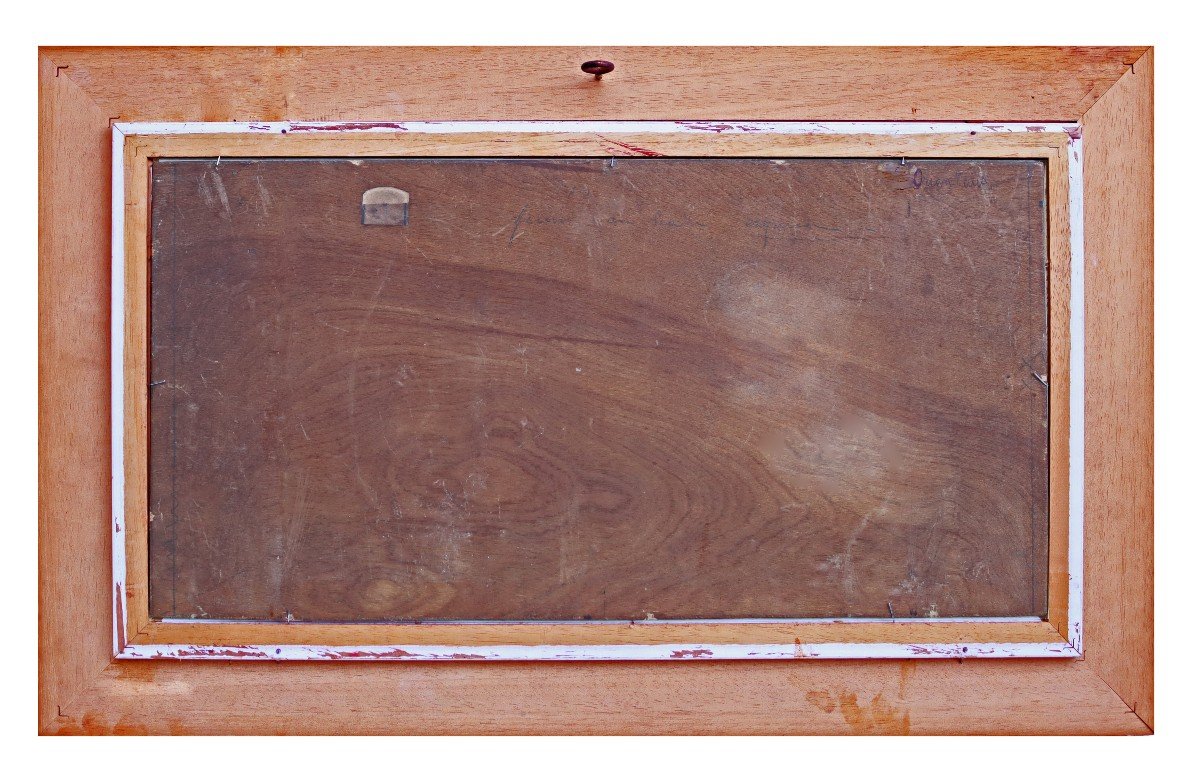
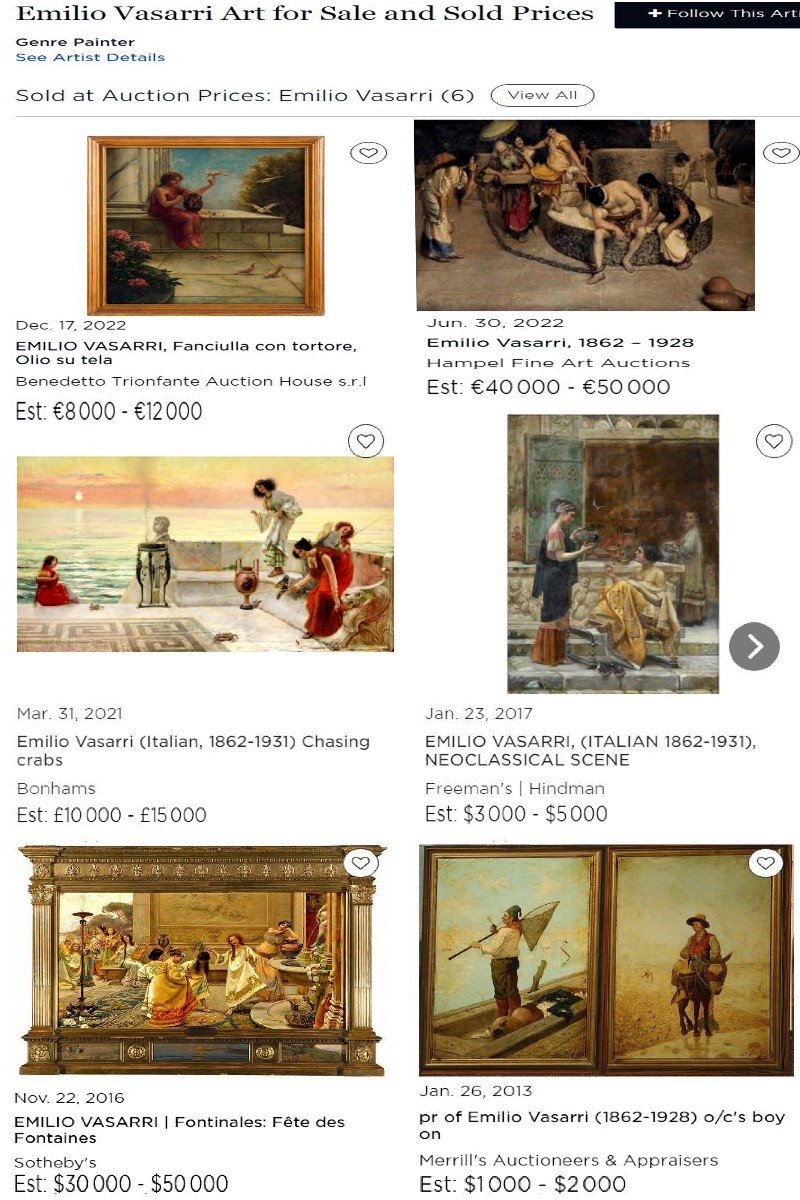

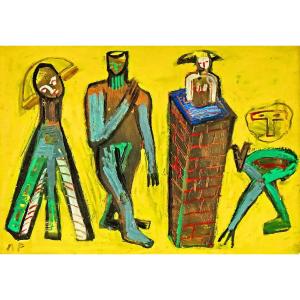



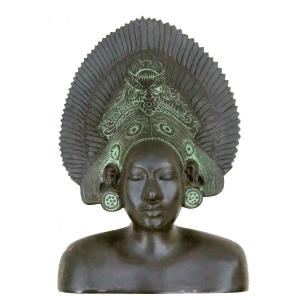









 Le Magazine de PROANTIC
Le Magazine de PROANTIC TRÉSORS Magazine
TRÉSORS Magazine Rivista Artiquariato
Rivista Artiquariato
